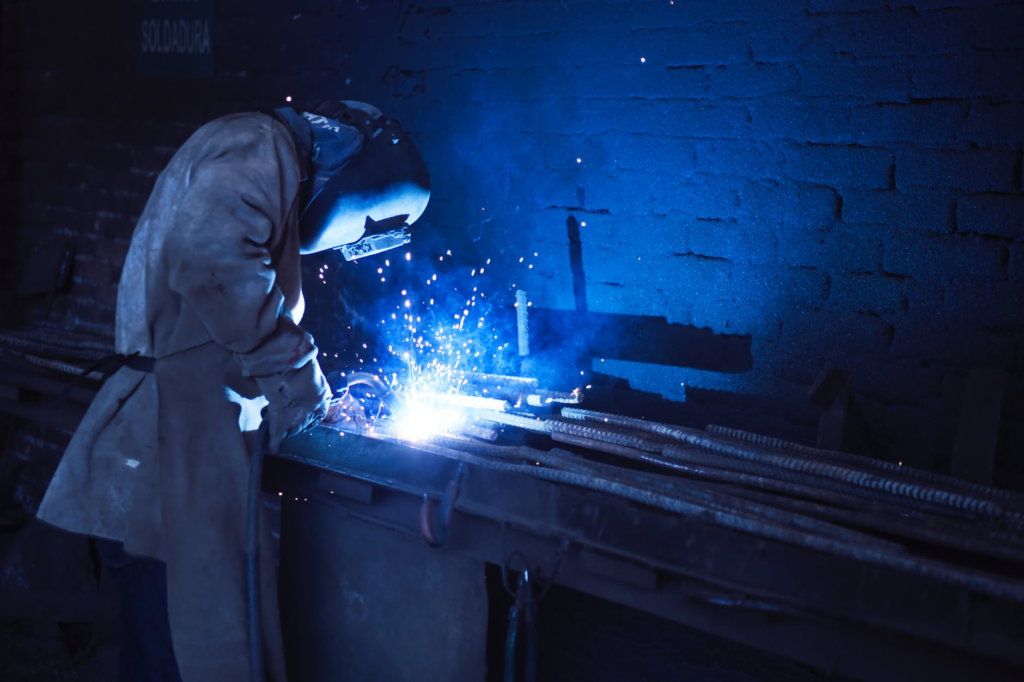The art of welding dates back to the middle ages. The rapid advancements in modern technology mean that welding technology is also improving at a pace hitherto unforeseen. Welding is the process of adhering two or more pieces of metal at the molecular level.
The strength of the weld is usually higher than the strength of the base metal piece. Arc welding uses the welding electrode to fuse the metal pieces. If you wish to pursue a career in welding, you need to be aware of the latest in welding technology and equipment.
Being aware of the various welding rods along with each of their strengths and weaknesses is paramount in ensuring a successful weld. Learning the complex nuances of welding rods can be a daunting task for a beginner.
This article will take you through the paces to know everything about the new technologies behind welding electrodes. But first, let’s get a hold on what are welding electrodes.
Table of Contents
What Are Welding Electrodes?
Welding electrodes or welding rods is a coated metal wire which connects with the welding machine. Welding electrodes are of two types – Consumable and Non-Consumable. Shield metal arc welding uses a consumable electrode which melts and fuses with the metal during welding.
Whereas in Tungsten inert gas welding, the electrode is reusable since it is non-consumable and does not melt away during welding. The welding electrodes typically come with a coating. Although wires without coat exist, they are preferable only for certain types of welds.
Choosing the right rod is essential in ensuring a good weld of excellent quality. Let’s move on to know how you should select a welding rod.
How To Select Welding Electrodes?
The requirements for every weld is different. The selection of the welding rod depends on the following criteria –
- Base metal
- Ductile strength
- Resistance to corrosion
- Weld type
- Current
- Tensile strength
- Polarity
The welding rods consist of consumable and non-consumable variations.
Consumable electrodes
Light and heavy-coated electrodes are the types of consumable coated electrodes available for consumption. The coating is a requirement to improve arc stability, minimize impurities in the weld, and leaving the weld surface smooth and clean.
Light coated electrodes undergo spraying or brushing for the coating process. The coating usually consists of a metal or combination of metals with similar properties to the metal undergoing welding.
The coating of heavy coated electrodes is by the process of extrusion or dripping. The coating of heavy coated electrodes is of three types. The first coating consists of cellulose which employs a gas layer for protecting the weld zone.
Another type of coating consists of minerals that form a layer of slag on the weld. The last type consists of a combination of minerals and cellulose. Heavy coated electrodes are preferable in welding heavy duty applications such as welding of cast iron frame.
Non – Consumable Electrodes
Carbon electrodes and Tungsten electrodes are the two types of non-consumable electrodes. Carbon graphite with a coating of copper or without a coating composes carbon electrodes.
Tungsten electrodes find application in the TIG welding process. You can know the composition of tungsten rods by checking the color of the markings on them. Pure tungsten rods come with a green marking, whereas rods with 1% Thorium comes with yellow marking.
Tungsten rods with 2% Thorium come with red markings and rods with 0.3-0.5% of Zirconium come with pink markings. Tungsten rods with one or two percent of Thorium content are the popular choice for welding due to their superior resistance and endurance.
Bare Tungsten electrodes are only applicable in minor welding applications. The reason being their weaker strength and incompatibility with high currents. Tungsten electrodes with traces of Zirconium find use in welding with alternating current. However, the welds of these rods are weaker than the rods containing Thorium.
How Are Welding Rods Classified?
The classification of welding rods depends on criteria such as electrode diameter, tensile strength, coating material, suitable welding position, and iron powder proportion. Consumable electrodes can not be thicker than the thickness of the metal pieces to be welded.
The iron powder ratio is vital in deciding the amount of molten metal available for welding. The iron converts to steel due to the creation of extreme heat during the welding. A numbering system by the American Welding Society provides information on electrodes.
Electrodes with an ‘E’ marking ensuing with 4 or 5 digits implies an arc welding electrode. The first two digits of the code indicate the tensile strength of the electrode material. If the code consists of 5 digits, then the first three digits stand for the tensile strength.
The digit before the last indicates the weld position. The figure ‘1’ stands for any position electrodes, ‘2’ stands for rods usable in flat and horizontal welds, and the digit ‘4’ stands for horizontal, vertical, flat, and overhead electrodes.
Both of the final two digits indicate the type of electrode coating and the favorable welding current. Some electrodes contain an R suffix which implies resistance to moisture.
Conclusion
It is integral now more than ever to keep abreast of all the latest developments in the latest welding technologies. Adopting new technologies will improve productivity and efficiency while reducing unnecessary expenditures.
Alex is fascinated with “understanding” people. It’s actually what drives everything he does. He believes in a thoughtful exploration of how you shape your thoughts, experience of the world.

